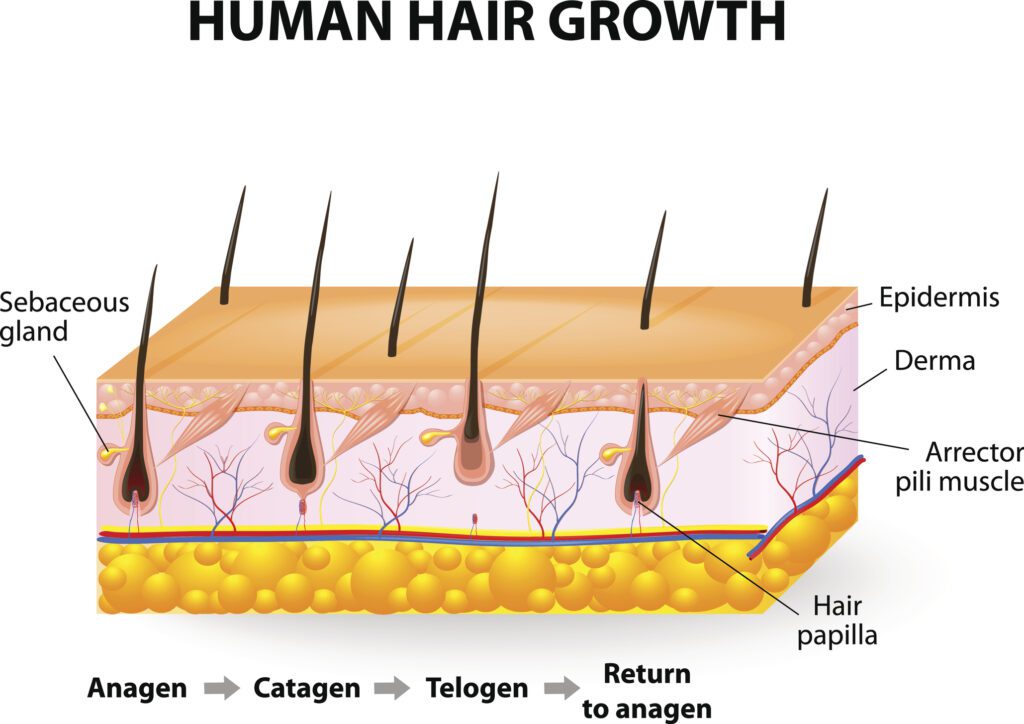
Chemotherapy refers to the use of anti-cancer drugs to destroy cancerous cells in the body. These drugs typically slow down cell division and hair production. The hair fiber narrows and the hair breaks off or falls out easily. Some cancer drugs can cause permanent thinning but often this type of hair loss is temporary and hair growth gradually returns to normal levels after chemotherapy.
With chemotherapy, the hair falls out, or breaks, in the anagen stage. This condition is typically referred to as anagen effluvium.
Chemotherapy can cause or worsen female pattern hair loss, a genetic disorder, as well as worsen hair breakage. Some drugs used for breast and ovarian cancer block the action of estrogen, the female sex hormone. This increases the influence of androgens (the male sex hormones, which are present in women at much lower levels) on the hair, which can either trigger or worsen female pattern hair loss.
Here is a brief overview of the stages of hair follicle cycling.
In the schematic below, anagen refers to the hair growth phase; catagen is the regressing phase; and telogen, the resting or quiescent phase.

Normally, about 85% of the hair in an adult is in the anagen phase of the hair cycle, about 1% in catagen, and about 14% in the telogen phase.
On average, anagen lasts for about 4 years, catagen for about 1 week, and telogen for about 3 months.
The period between telogen, when the hair falls from the scalp, and anagen, when new hair is produced, is referred to as ketogen. Ketogen itself can be divided into exogen and neogen. The hair falls out in the exogen phase and new hair forms in the neogen phase.
Chemotherapy, i.e., cancer drugs, slow down cell division, and because cells in the hair bulb divide quickly, hair production slows down, the hair fiber narrows, and the hair breaks off too easily. The good news is that the hair loss is often temporary and gradually returns to normal after chemotherapy is completed.
The wave and curl type can also be affected by chemotherapy but normally the change is temporary and also returns to normal.
Other causes of anagen effluvium include radiation and exposure to toxins such as mercury and boric acid.
To learn more about hair loss, check out this article.






